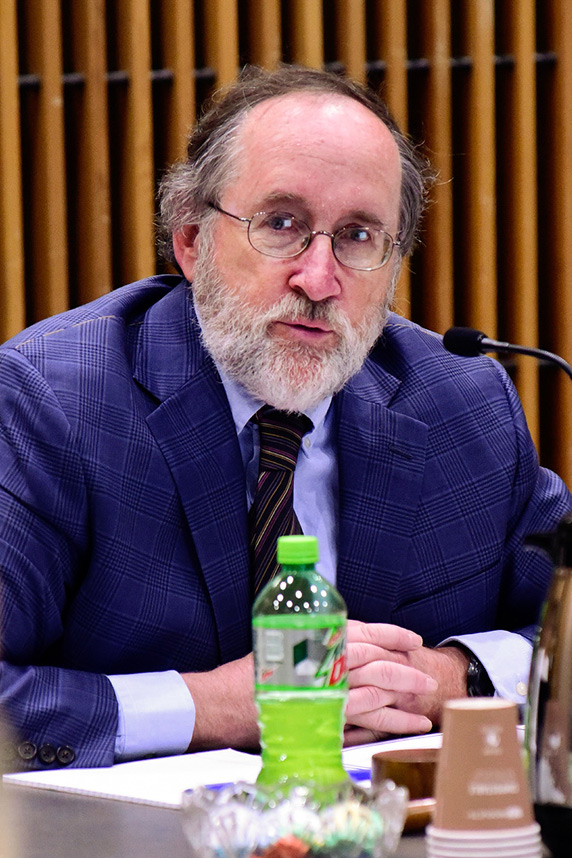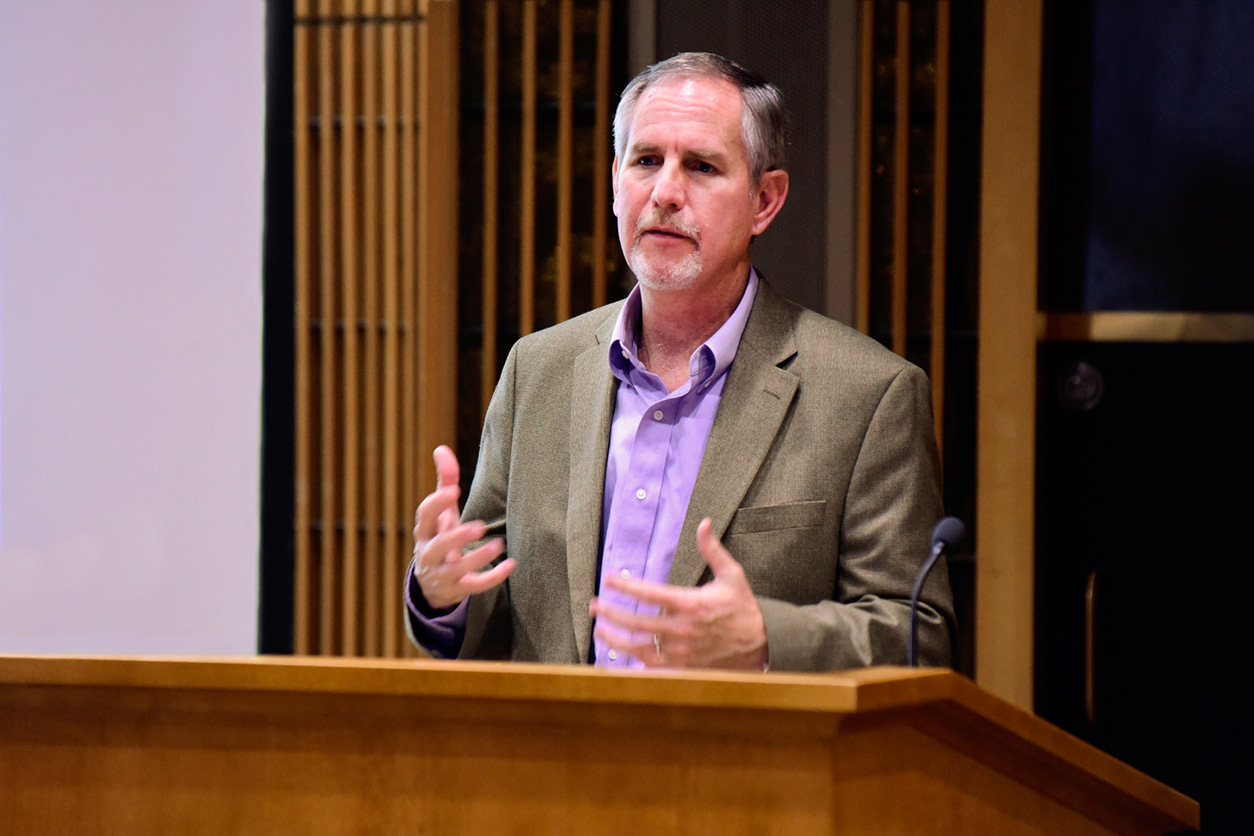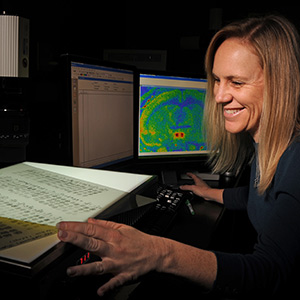 BSC chair Kenneth McMartin, Ph.D., from the Louisiana State University Health Sciences Center, led the virtual meeting. (Photo courtesy of Steve McCaw)
BSC chair Kenneth McMartin, Ph.D., from the Louisiana State University Health Sciences Center, led the virtual meeting. (Photo courtesy of Steve McCaw)The National Toxicology Program (NTP) Board of Scientific Counselors (BSC) met Feb. 15 via WebEx to continue a conversation that began in 2018. Exploring the theme of “The Changing Toxicology Landscape: Challenges and the Future of Risk Assessment,” participants further discussed a shift in NTP’s scientific direction and capabilities.
Speakers, who represented NTP stakeholders and federal partners, described their institution’s perspective on NTP leadership as toxicology transitions from an observational to a more predictive science, foretelling which chemicals will be harmful. The goal is to ensure that the scientific information NTP generates is relevant and useful for addressing public health issues.
Evolving needs meet advancing technology
NTP Associate Director Brian Berridge, D.V.M., Ph.D., set the overall tone for the proceedings in his introductory remarks. “We are at a really interesting intersection between evolving needs as a society and as a science, and a growing opportunity with the rapid advances in technology,” he told the counselors. “I’m excited by the notion that the NTP is sitting squarely at that intersection — it’s a great place to be.”
“We’re working through what the NTP could and should be as it evolves into the future, recognizing that our context is rapidly changing,” he added.
 “This is how you innovate,” Berridge told the counselors. “You change the way you think, you change the way you develop capabilities, and you change your focus.” (Photo courtesy of Steve McCaw)
“This is how you innovate,” Berridge told the counselors. “You change the way you think, you change the way you develop capabilities, and you change your focus.” (Photo courtesy of Steve McCaw)Representatives from five of the nine federal members of the NTP Executive Committee shared their organizations’ thoughts on the changing toxicology landscape.
- Department of Defense, represented by Patricia Underwood, Ph.D.
- National Center for Toxicological Research, U.S. Food and Drug Administration, represented by William Slikker, Jr., Ph.D.
- National Institute for Occupational Safety and Health (NIOSH), represented by John Piacentino, M.D.
- National Center for Environmental Health and Agency for Toxic Substances and Disease Registry, represented by William Cibulas, Jr., Ph.D.
- National Center for Computational Toxicology, U.S. Environmental Protection Agency, represented by Russell Thomas, Ph.D.
Partners in practice
A common thread was the development processes in progress at each organization as it deals with many of the same issues and opportunities that NTP faces.
For example, Piacentino, who is associate director for science at NIOSH, described his agency’s outlook on the new directions in toxicology and the NIOSH relationship with NTP.
“The message for NIOSH in terms of how we’re engaging within the NTP partnership and how we’ll engage in the future is that we continue to believe that observational studies, certainly in human populations, will be relevant,” he said, “but perhaps the way that we’re conducting our work needs to change, with greater emphasis on coordination and capitalizing on new and improved technologies.”
 Robert Sills, D.V.M., Ph.D., was among the NTP staffers who attended the board meeting. (Photo courtesy of Steve McCaw)
Robert Sills, D.V.M., Ph.D., was among the NTP staffers who attended the board meeting. (Photo courtesy of Steve McCaw)Piacentino cited improvements in sensor technologies and direct reading instruments, which provide real-time exposure measurements for gases, vapors, aerosols, and fine particulates suspended in air. These improvements bring dramatic changes to NIOSH’s ability to analyze and characterize exposures of interest.
Nuances in the new approach
Ad hoc board member Weihsueh Chiu, Ph.D., from Texas A&M University, pointed out the difference between the characteristics of compounds and the characteristics of disease.
“There is a subtle distinction, for instance, between cancer hallmarks and the key characteristics of carcinogens,” he noted. Chiu recommended that the distinction be kept in mind as NTP moves forward.
(Ernie Hood is a contract writer for the NIEHS Office of Communications and Public Liaison.)









